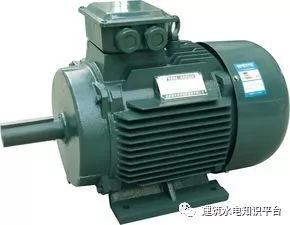
1. Short circuit to ground in the motor: The testing method involves connecting one end of the megohmmeter to ground and the other end to the motor terminal. If the insulation reads zero, it indicates a short circuit.
2. Open circuit between windings: The testing method involves connecting the megohmmeter to the two motor terminals. If the insulation reads greater than zero, it indicates no open circuit.
3. Short circuit between windings: Use a bridge tester for this.
Examples of How to Determine Condition:
1. How to test the condition of a three-phase AC motor?
1. Use a megohmmeter, a 500V megohmmeter is sufficient, to measure the insulation resistance from the three terminals to the motor casing. It should be above 0.5M ohms to indicate no short circuit to ground.
2. Use a multimeter to measure the resistance between phases A/B/C. The values should be approximately equal. If they differ significantly, the motor can still run but will not last long. Remember, the larger the motor, the smaller the resistance! However, all three phases should not be 0 ohms unless it is a very large motor, such as above 50KW! Note that for variable speed motors, the resistance values of the six terminals can differ!
3. Check the bearings and fan; generally, if the motor is wound, it is best to replace everything! Sometimes a seized bearing can also burn out the motor!
4. The no-load current of the motor is generally 10% to 50% of the rated current; sometimes the no-load current can even be zero!
5. When the motor is running at rated current, it operates at full load, and the output power is basically 100%. If the running current is low, it indicates that the motor’s output power is reduced, indicating light load operation.
2. How to test the condition of a single-phase AC motor?
Use a 500V megohmmeter to measure the insulation resistance between the motor windings and the casing, which should not be less than 0.5 megohms; use a multimeter to check for continuity in the winding leads. If all the above conditions are met, the motor is good.
To test the capacitor’s condition, a pointer multimeter is more convenient (there are also digital meters with a capacitance range that can measure directly).
Set the multimeter to the 1K or 10K resistance range, measure the two leads of the capacitor, and if the needle quickly deflects to the right and then slowly returns to the left, the capacitor is good; if it stays deflected to the right, the capacitor is shorted; if the needle does not move, the capacitor has an internal break or no capacitance left. This method can only determine the capacitor’s condition.
3. How to test the condition of a DC motor?
First, check for any broken wires and measure the resistance to see if it is normal. If it is a brushed DC motor, you can rotate the rotor and use a multimeter to measure if the output DC voltage is normal. If it is a brushless DC motor with three-phase leads, you can rotate the rotor and use a multimeter to measure if the output AC voltage is normal. The output voltage is proportional to the speed.
4. How to determine the condition of an offline motor?
1. Use a multimeter to measure the DC resistance of the motor’s three-phase windings; the closer the three measurements are, the better. If the difference is more than 10%, the phase with the lower resistance may have a winding short circuit.
2. Use a 500V insulation megohmmeter to measure the insulation resistance between the three-phase windings and to ground (to the casing). For motors that have been stored for a long time, the insulation resistance should be above 0.5 megohms to be considered good and usable. If it is between 0.1 megohms and 0.5 megohms, the motor has likely absorbed moisture and should be dried before use. Very low insulation resistance indicates that the insulation has been damaged.
3. Rotate the motor rotor; it should turn smoothly without noise or friction, indicating that the bearings and air gap are normal.
Examples of How to Use a Multimeter to Measure Condition
Using a multimeter:
1. The inter-phase resistance should be uniform; do not worry about how large the resistance is, uniformity is key. For motors above 15KW, you may measure 0 ohms because the multimeter’s range is too large. A micro-ohmmeter is needed.
2. The insulation resistance from the phase lines to the motor casing should be greater than 1M ohm. How to determine the condition of a three-phase asynchronous motor?
When measuring a single-phase motor, the capacitor should be disconnected.
1) Measure the current with a multimeter; the three-phase imbalance rate should not exceed 10%;
2) Use a megohmmeter to measure insulation; each phase to ground and between phases should not be less than 0.5 megohms;
3) Use a bridge to measure DC resistance; the three-phase imbalance rate should not exceed 2%;
In addition to the above methods, to check if the windings are normal, connect a small current range (e.g., 50 microamps) multimeter to any two leads, then rotate the motor. The multimeter needle should visibly swing (related to the speed of rotation). This method uses the motor’s residual magnetism to check the windings. If the windings are burned out, the needle will not move. A multimeter can determine inter-phase short circuits, grounding, and open circuits, but it is not effective for determining winding short circuits.
Using only a multimeter is not very accurate; it is best to use a megohmmeter to measure the insulation resistance of each phase, and then use a DC bridge to measure the DC resistance between the three windings to check for balance, and whether the values are too high or too low for absolute accuracy. The resistance of the three-phase windings should be equal, and the insulation resistance between phases and to the casing should be greater than 1 megohm. Overloaded windings can burn out, and if one phase is missing, another group may burn out while the other does not.
4. How to use a multimeter to determine the condition of a single-phase motor?
For single-phase motors, the starting winding’s DC resistance is greater than that of the running winding. The simplest method to determine this is:
1) First, use a multimeter to measure the DC resistance from the common terminal to the running winding terminal and the starting winding terminal.
2) Then, measure the DC resistance from the running winding terminal to the starting winding terminal.
3) If the sum of the two measurements in “1” does not equal the measurement in “2”, then the motor is definitely burned out!
If they are equal, it is best to compare with a motor of the same model or find the factory parameters of the motor for comparison to determine its condition.
When measuring a single-phase motor, the capacitor should be disconnected. A short circuit in a single-phase motor requires a reference resistance value under normal conditions.
5. How to use a multimeter to determine if a fan motor is burned out? The method is as follows:
The fan motor has five wires: 1st speed, 2nd speed, 3rd speed, and two capacitor wires. Generally, except for a few motors, the three speed wires are red, blue, and green, while the capacitor wires are black and yellow. Start by disconnecting all five wires from the motor.
First, set the multimeter to the ohm range, connect the red probe to any capacitor wire, and the black probe to the 1st speed wire. Record the resistance value, then measure the 2nd and 3rd speed wires. Normally, the higher the speed setting, the greater the resistance value between it and the capacitor wire. For example, 1st speed is 70 ohms, 2nd speed is 110 ohms, and 3rd speed is 150 ohms. You can record these values and compare them. In other words, if the resistance values for all three speeds are infinite, or if one speed is infinite, then the motor coil is burned out or one of the speed coils is broken. Lastly, measure the resistance of all five wires to the motor casing to check for any short circuits.

Learn to read electrical diagrams, and you will be able to read blueprints yourself, eliminating the worry of not understanding the diagrams.

Learn to calculate electrical quantities manually, and you will be able to fill out procurement lists yourself, eliminating the worry of not knowing how to calculate quantities.
 Learn to read plumbing diagrams, and you will be able to read blueprints yourself, eliminating the worry of not understanding the diagrams.
Learn to read plumbing diagrams, and you will be able to read blueprints yourself, eliminating the worry of not understanding the diagrams. Click
Click the blue text belowto read the original textand viewcourse details
the blue text belowto read the original textand viewcourse details